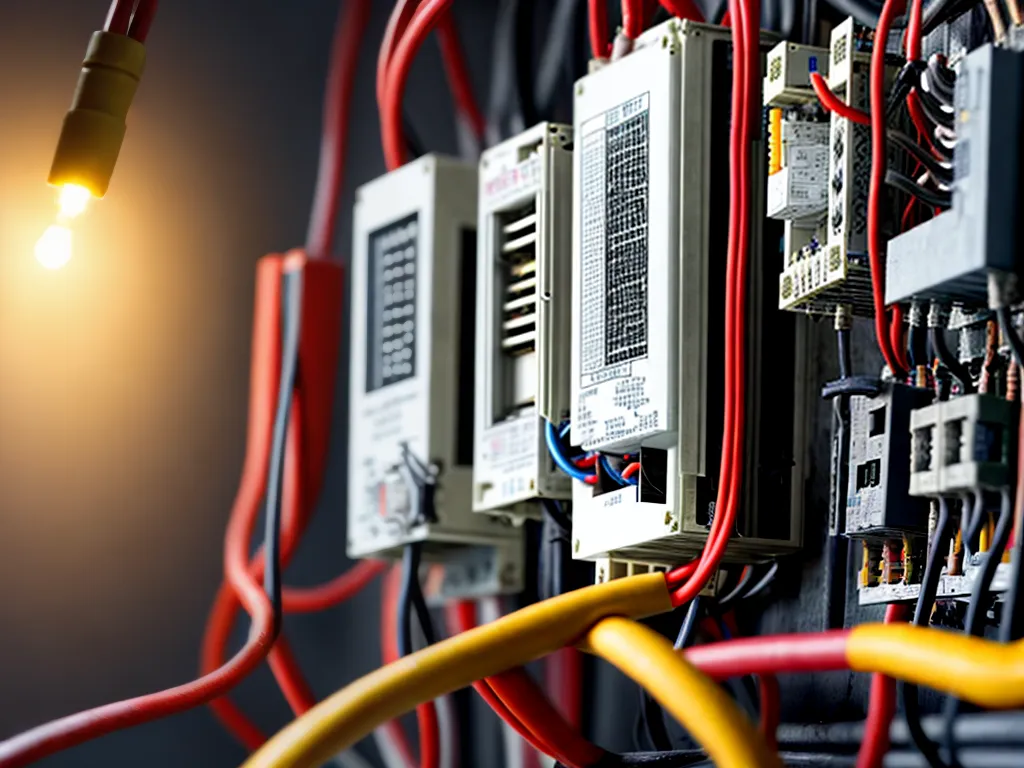
How to Troubleshoot Unexpected Power Surges in 3-Phase Wiring Systems
Introduction
Unexpected power surges in 3-phase wiring systems can cause damage to equipment and disruption of operations. Troubleshooting the root causes of power surges enables me to prevent them from occurring and minimize downtime. In this article, I will provide an in-depth guide on how to systematically troubleshoot and address unexpected power surges in 3-phase power systems.
Understanding Power Surges
Power surges are sudden, brief spikes in voltage that can damage equipment connected to the electrical system. In a 3-phase system, surges can occur on one or more phases.
Some common causes of power surges include:
-
Lightning strikes - Direct or nearby strikes can induce power surges that propagate through the wiring.
-
Faulty devices - Malfunctioning equipment like generators and transformers can cause voltage spikes.
-
Switching loads - Turning large loads on or off abruptly can create surges.
-
Grid disturbances - Issues with power distribution can lead to surges reaching end users.
Power surges can be very brief (microseconds) or last up to a few milliseconds. The amplitude can range from 140% to over 1000% of normal voltage. Such abrupt spikes can damage connected loads like motors, electronics, and lighting equipment.
Preparation and Safety
Before troubleshooting 3-phase surges, I take the following precautions:
-
Use proper personal protective equipment (PPE) including insulated gloves, shoes, and eyewear.
-
Turn off and isolate any affected circuits. Lock out and tag out to prevent accidental re-energization.
-
Check that wiring has adequate overcurrent protection through fuses or circuit breakers.
-
Inspect the system for physical damage before re-energizing. Look for burnt wiring insulation, overheated connections, etc.
-
Have an approved electrical tester to safely measure voltages.
-
Refer to system diagrams to understand the layout and connections.
Troubleshooting live systems should only be done by qualified electricians following safe procedures.
Inspection and Voltage Measurements
With the system safely isolated, I inspect for any signs of damage:
-
Check fuses/breakers for any that have tripped, indicating a fault or overload.
-
Look for burn marks or melted wiring insulation.
-
Use a multimeter to check for short circuits between phases and to ground.
I then measure steady state voltages between phases and neutral:
-
Voltages should be balanced, with each phase voltage equal.
-
Voltage levels should be within ±10% of nominal. Significant unbalance or deviation indicates an issue.
-
Use an oscilloscope to check for disturbances or abnormalities in the voltage waveform shape.
Measuring voltages provides baseline data to compare with readings during the surge troubleshooting process.
Step-by-Step Troubleshooting Process
With safety checks complete, I use the following systematic process to troubleshoot the root causes of surges:
1. Recreate the Surge
-
Attempt to recreate the real-world conditions that led to the surge. For example, turn on the problem load or simulate the lightning strike with a surge generator.
-
Have measurement equipment ready to capture voltage amplitudes and waveforms during the surge.
-
Analyze the measurements to characterize the surge behavior. This provides clues on the possible causes.
2. Isolate the Source
-
Disconnect different parts of the system and attempt to recreate the surge in each.
-
Check incoming power without any loads. Surges here indicate problems in the facility power supply.
-
Disconnect loads individually and repeat surge testing. Surges that disappear when a specific load is isolated indicate it may be the cause.
3. Check System Components
With the source of the surge isolated, closely inspect associated system components:
-
For surges traced to supply side, check utility transformers, meters, and feeders for any damage.
-
For surges from a load, test it for leakage currents, degraded insulation or faulty connections. Replace if necessary.
-
For lightning surges, inspect the grounding electrode system. Check that surges can pass safely to earth.
-
For surges from switching loads, install zero-crossing relays for gradual switching. Replace worn contactors.
4. Install Suppression Devices
For unavoidable surges from the utility or lightning, install surge suppressors:
-
Line-to-ground suppressors safely divert surges to earth before they reach critical loads. Size appropriately for system voltage.
-
Line-to-line suppressors clamp surges between phases. Useful for 3-phase systems.
-
Install suppressors closest to the source of the surge. This prevents propagation further downstream.
5. Re-test Performance
After any mitigation steps (fixing faulty components, adding suppressors), re-test surge performance:
-
Attempt to re-create surge conditions.
-
Verify if surges still exceed acceptable levels through voltage measurements.
-
Ensure surge suppressors are effectively diverting surges without becoming overloaded.
Additional suppression devices or an isolation transformer may be required if surges still persist.
Preventive Maintenance
Once the root causes of surges have been addressed, I implement an ongoing preventive maintenance program:
-
Periodically re-test surge levels and inspect key system components.
-
Maintain surge suppressors according to manufacturer specifications.
-
Ensure adequate separation between power and data cables.
-
Consider power conditioning devices like isolation transformers for critical equipment.
-
Verify proper system grounding is in place.
-
Encourage facility-wide awareness and training on electrical safety.
Proactive maintenance greatly reduces the chances of recurrence of unanticipated power surges.
Conclusion
Unexpected power surges can disrupt operations and damage equipment. By systematically isolating the source of the surge, rectifying issues, and installing suppression devices, I can eliminate the root causes. Ongoing preventive maintenance helps provide long-term surge protection and electrical safety. A proactive surge mitigation program reduces downtime and prevents damage, delivering reliable 3-phase power.